Seville is the largest city and capital of the Spanish region of Andalusia with a population of around 1.5 million. Its historic centre is packed full of splendid buildings and tourist attractions including three UNESCO World Heritage Sites. Not surprisingly, it was heaving with tourists when I visited earlier this summer.
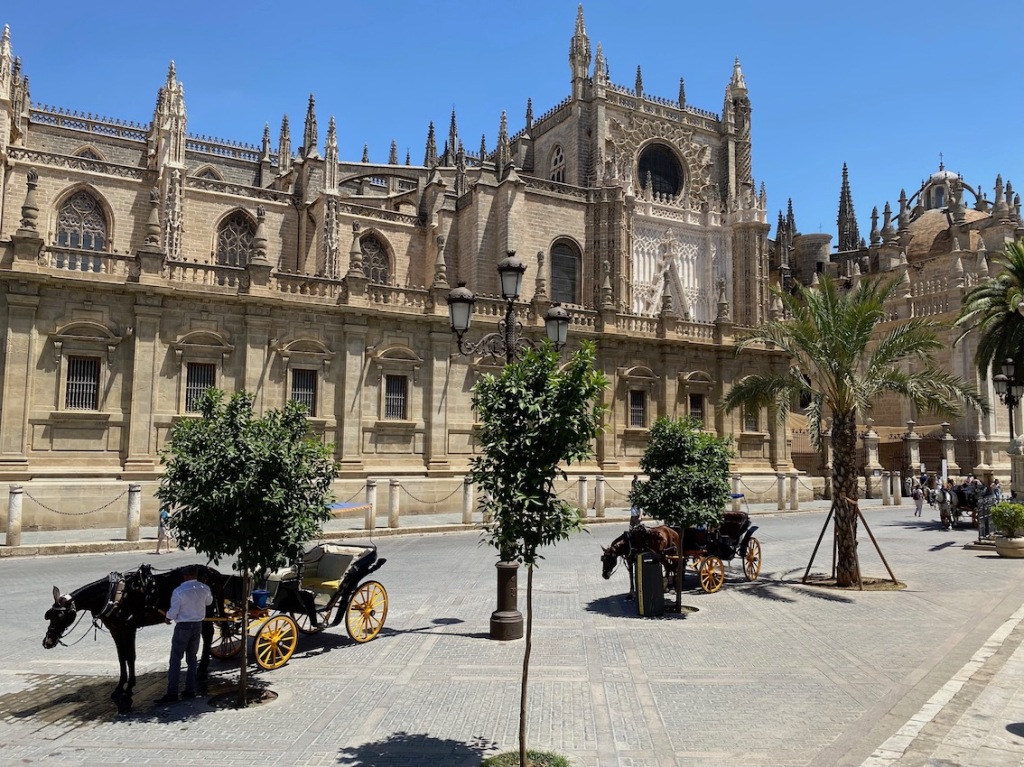
One of those World Heritage Sites is the Cathedral, Catedral de Santa Maria de la Sede, which is said to be the third largest church in the world, after St. Peter’s Basilica in Rome and St. Paul’s Cathedral in London. The Cathedral started life as a mosque, built during the Moors’ 800 year occupation of Andalusia. It was mostly destroyed and rebuilt as as a Gothic style church in the 1400s.

La Giralda is the magnificent bell tower attached to the cathedral. The base of the tower was originally the minaret of the mosque with the upper floors (from the bells upwards) being added later by the Christians.


Facing the cathedral is the Alcazar, a complex of palatial rooms, courtyards and gardens lavishly decorated in the Moorish style.
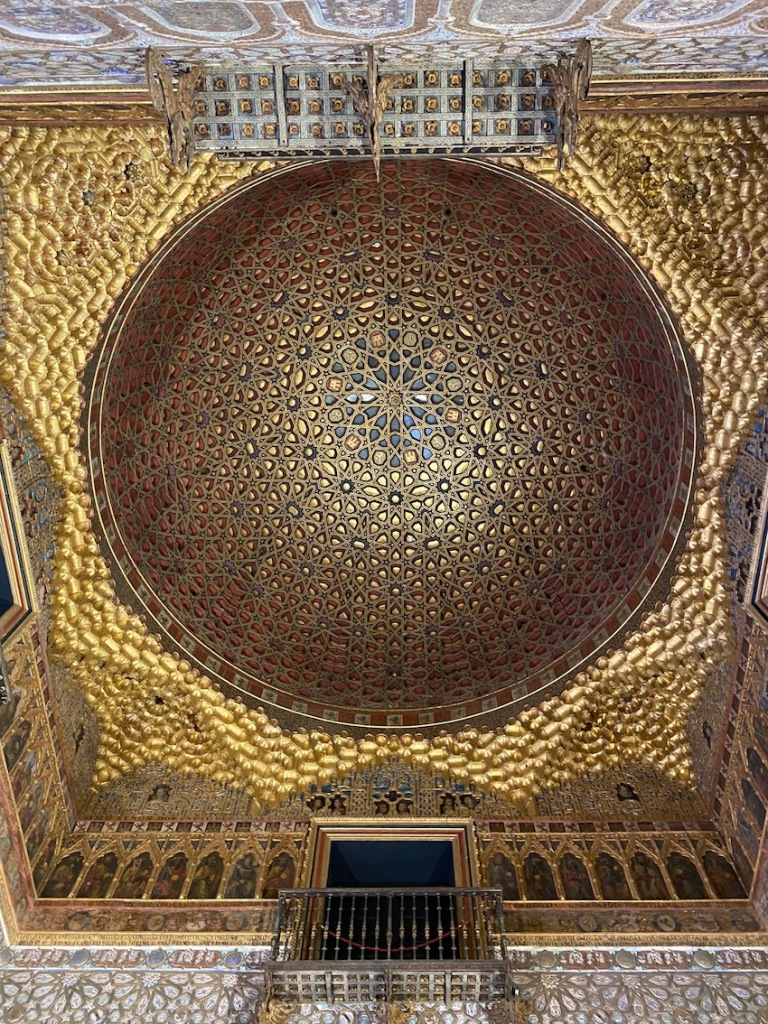
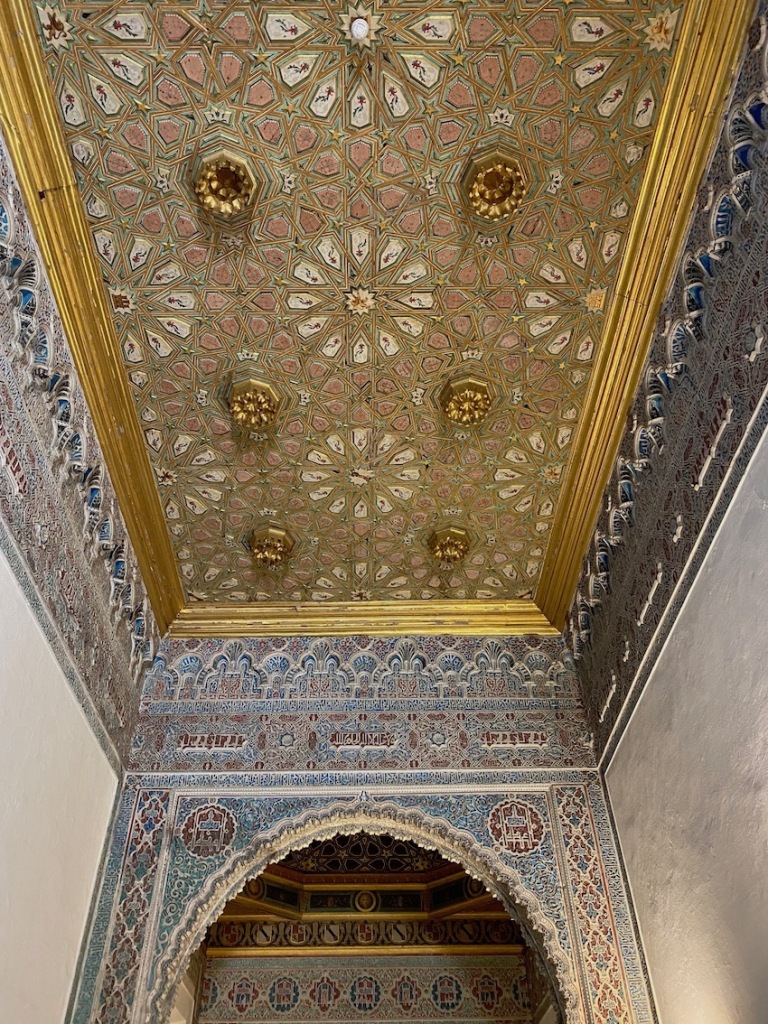

This architectural mix of Muslim and Christian styles is known as Mudéjar and can be seen again at Pabellón Mudéjar in Maria Luisa Park. It was built between 1913 and 1915 and served as a permanent pavilion for the 1929 Ibero-American Exhibition. It now houses a museum, the Museo de Artes y Costumbres.
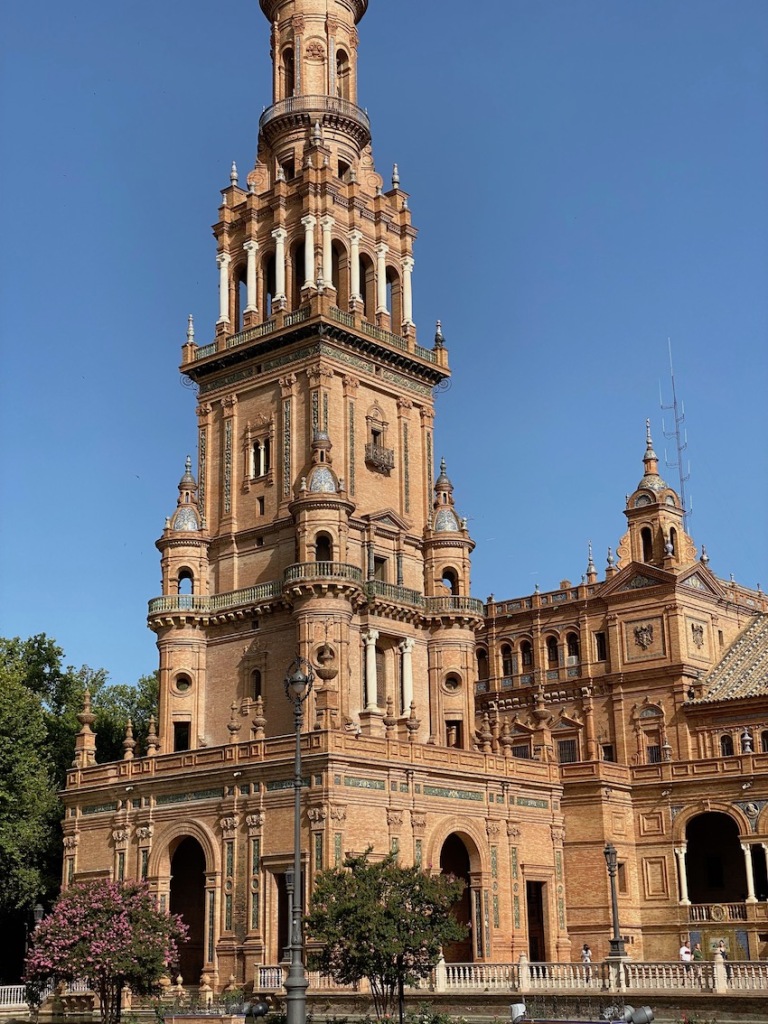
The Plaza de España in Maria Luisa Park, was also built for the 1929 expo. The fancy, wedding cake architecture is somewhat ‘OTT’ but you cannot fail to be impressed by the scale and ambition of the project.
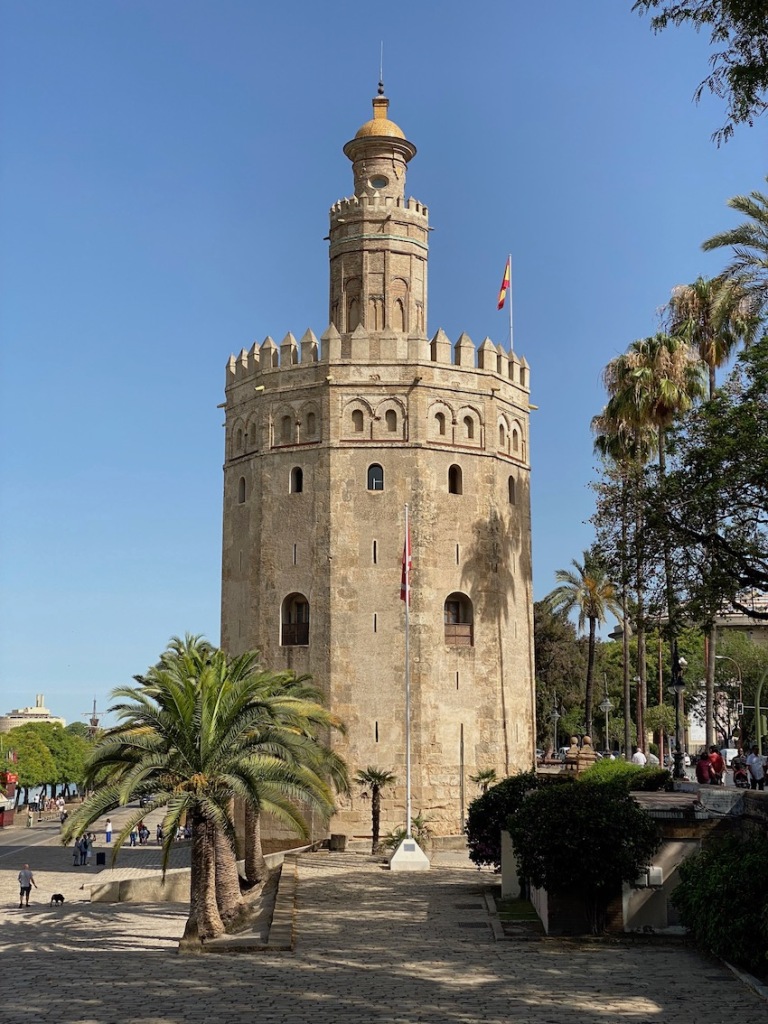
The Torre del Oro was built around 1220 by the Almohad Caliphate (the Moors) to control access to Seville via the Guadalquivir river. A heavy chain was slung between it and another tower (since demolished) on the opposite bank to block the river. Guadalquivir by the way, is the Hispanicized rendering of Wadi Kabir, meaning big wadi in Arabic.

Jews were the other big community in Seville during Moorish times and around 5,000 of them lived in the Santa Cruz Quarter until they were expelled during the Spanish Inquisition in the 15th century. Today Santa Cruz is a popular tourist area with narrow lanes, shops and restaurants.

There are lovely buildings wherever you look in central Seville. This is Palacio Arzobispal (Archbishop’s Palace), situated just behind the cathedral.

And this beauty is the Portuguese Consulate in Seville.
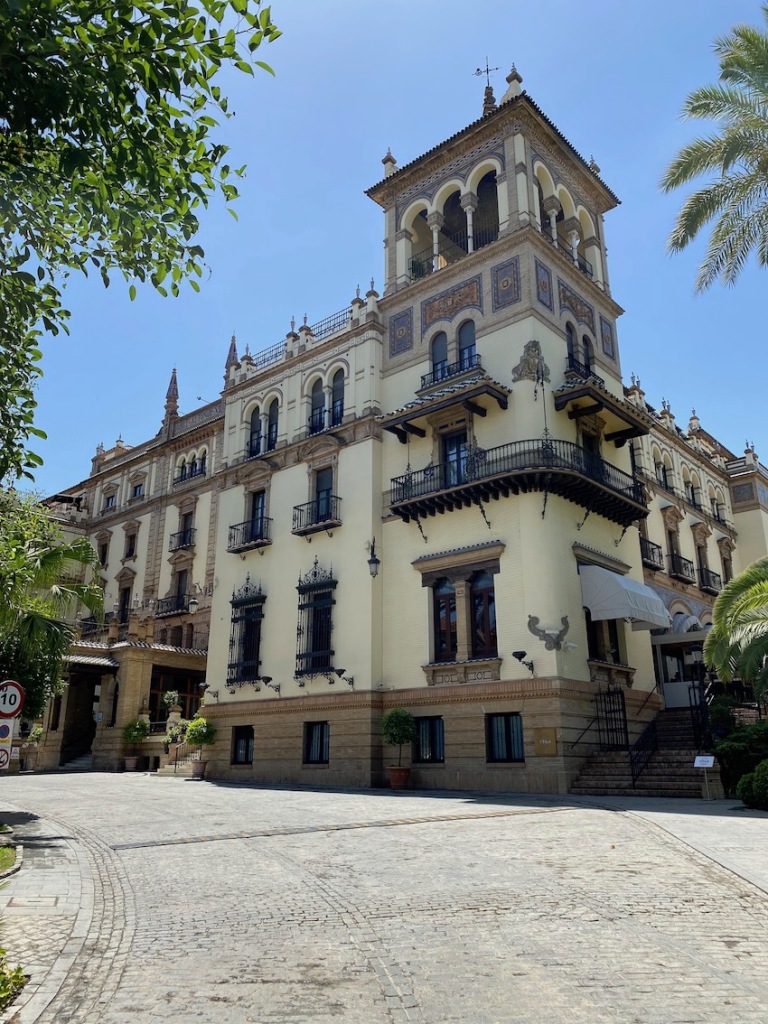
Hotel Alfonso XIII was built for the 1929 Exhibition to accommodate international visitors. Now it is part of the Marriott’s Luxury Collection.


The University of Seville’s HQ has, since the 1950s, been housed in this neoclassical stone building which was originally a tobacco factory, Fabrica Real de Tabacos.

Casa de Pilatos was begun in 1483 and is a mixture of Italian Renaissance and Mudéjar styles. It contains one of the world’s largest collections of azulejo glazed tiles.
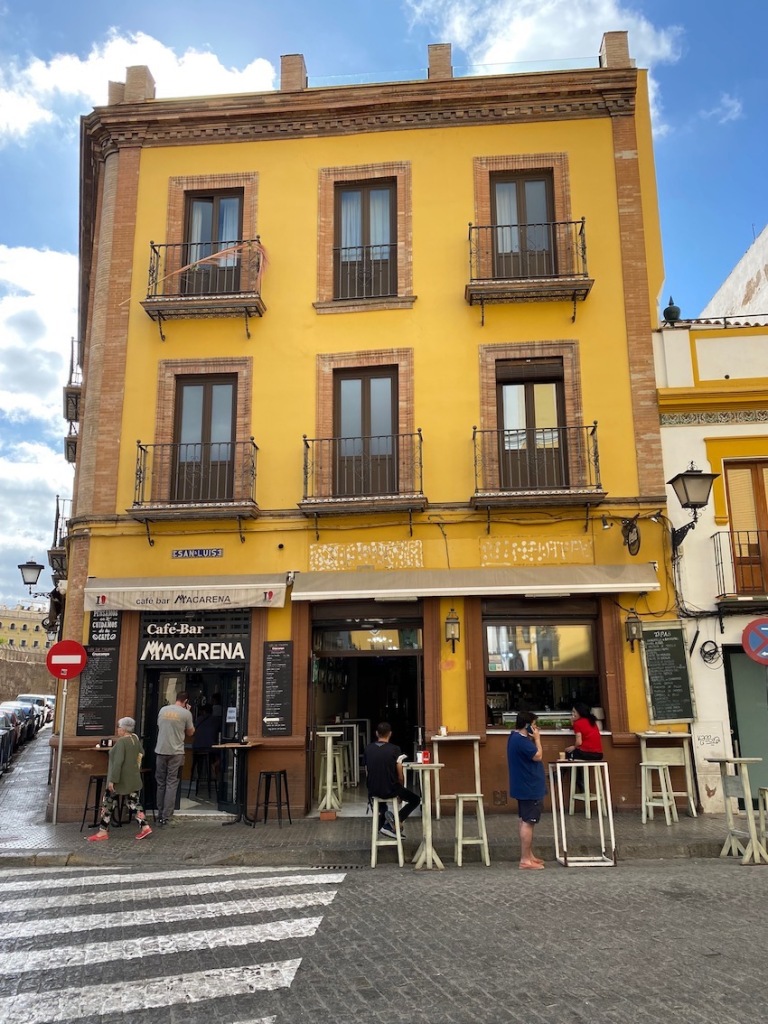
The Macarena District was once one of the poorer slums in Spain but is now smartened up somewhat and is a popular spot for tapas, small bars and quirky shops. The district surrounds the Basilica de la Macarena where a virgin statue of La Macarena de la Esperanza is displayed. The statue is adorned with five emeralds which were donated by the bullfighter Joselito who has his own statue outside the church.

The Metropol Parasol, referred to by locals as Las Setas (the mushrooms), is a striking modern structure said to be the largest timber-framed construction in the world and sits, rather jarringly, in the heart of the old city. You can take a lift to the top and admire the view from an elevated walkway while skateboarders clatter around below.
We only spent a couple of days in Seville and could only scratch the surface of this impressive city but I hope this gives you a flavour. Next stop Cordoba.
